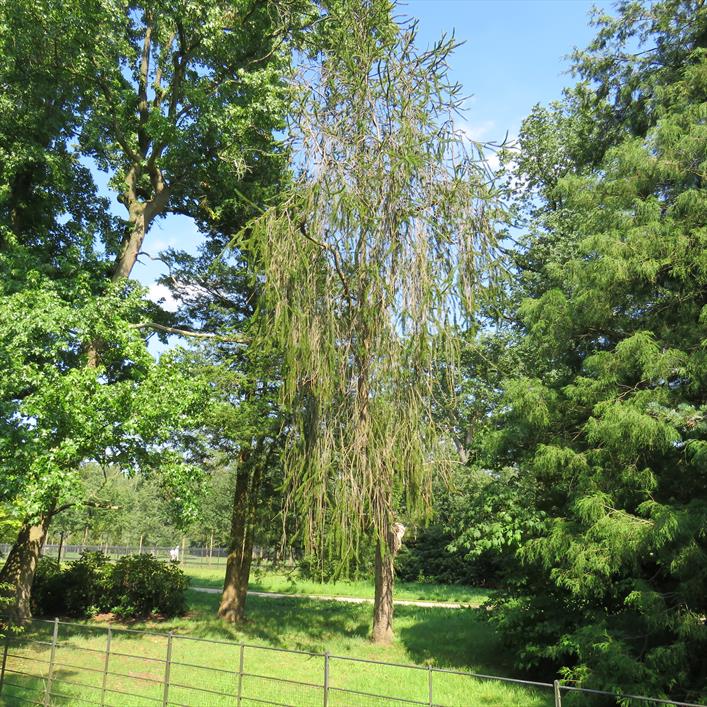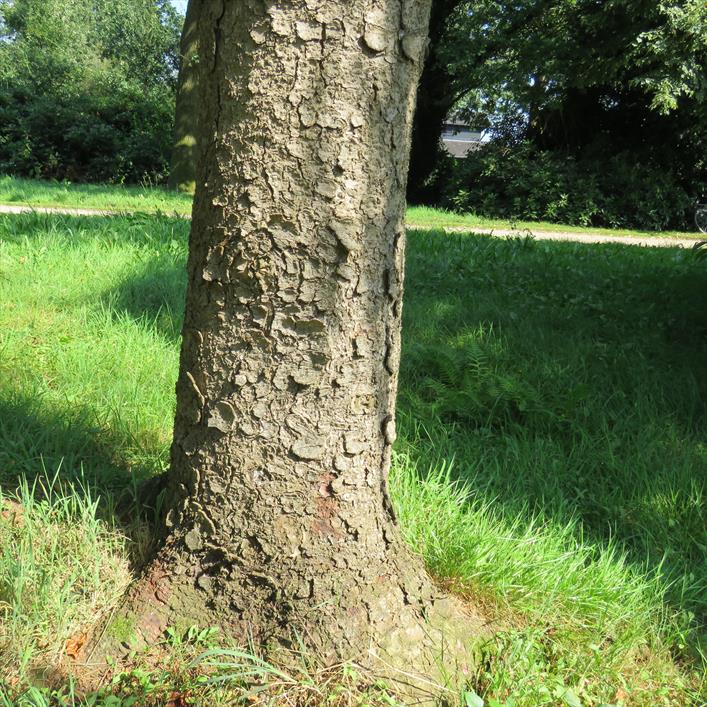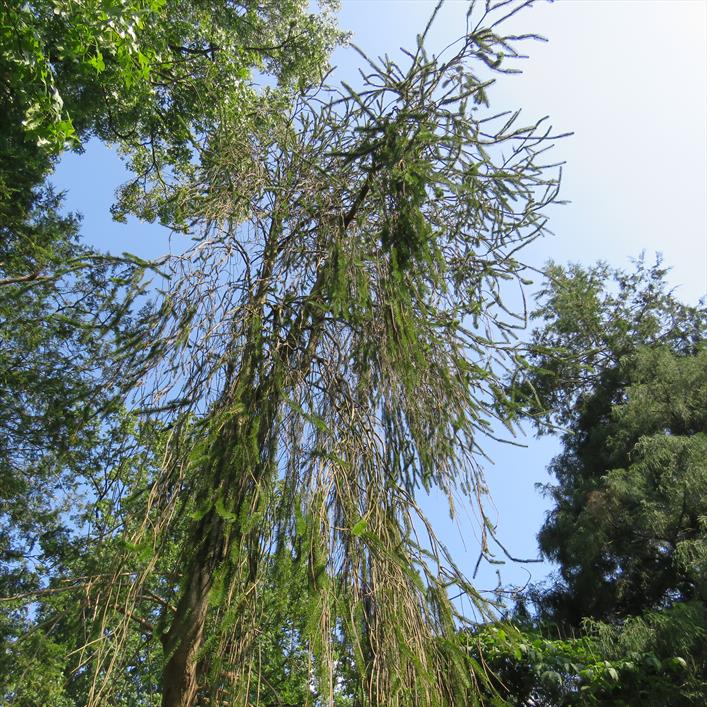Brewer Spruce
Picea breweriana
Pine familiy (Pinaceae)
Can tolerate cold but not fire
This species of spruce, which only occurs in the Klamath and Siskiyou Mountains of southwestern Oregon and northwestern California, was first discovered in 1897 by the American botanist William Henry Brewer. The tree can reach up to 40 m in height and has sloping branches from which many twigs grow vertically downwards – on mature trees they can reach more than 2 m in length.
It grows between 1000 and 2300 m in altitude, particularly on steep, north-facing slopes and ridges where snowfall is high in winter, abundant melt water in the spring, and summer drought. There is still a large handful of known natural sites in the wild on which Brewers weeping spruce is still growing. The species is sensitive to fire due to its thin bark and long, drooping branches.
Read more.... »Themes
Crown jewel on the Twickel Estate.
The particularly striking Pinus breweriana was discovered in 1897 by the American botanist, William Henry Brewer and has a small natural distribution.
Young male catkins are eaten raw or cooked. Used as a flavouring. Immature female cones are cooked. The central portion, when roasted, is sweet and syrupy. The inner bark is dried, ground into a powder and then used as a thickener in soups etc. or added to cereals when making bread. A refreshing tea, rich in vitamin C, can be made from the young shoot tips.
The wood is soft, heavy and close grained. It is valued by the pulp industry to make paper. Harvested trees are normally mixed with other species and utilized as low grade timber. In Europe it is a popular ornamental conifer.
Brewer's spruce is considered to be one of the most attractive conifers in the world, and one of the rarest.
Details
| Description: | Conifer, up to 40 m. |
|---|---|
| Distributions: | Southwestern north america (california and oregon) |
| Habitat: | Usually on dry mountain ridges and peaks near the tree line (montane to subalpine forests), forming small groves at around 1000-2300 m altitude, although the best specimens are found on deep moist, well-drained soils. |
| Year cycle: | Perennial (polycarpic evergreen) |
| Hardiness: | -4 - 5 f (hardy - very cold winter) |
| Flowering period: | Mei |
| Flower color: | Red, green |
| Notes on flowers: | The male cones are small and red, and tend to grow at the ends of shoots; female cones are green and erect. |
| Fruiting period: | September - november |
| Fruit color: | Brown |
| Notes on fruits: | The slightly curved cones are brown and up to 15 cm in length and are amongst the longest of all american spruces. |
Sources
https://threatenedconifers.rbge.org.uk/conifers/picea-breweriana,https://www.rhs.org.uk/Plants/12936/Picea-breweriana/Details?returnurl=%2Fplants%2Fsearch-results...,
http://www.pfaf.org/user/Plant.aspx?LatinName=Picea+breweriana,
http://www.kew.org/visit-kew-gardens/explore/attractions/brewers-spruce,
http://www.efloras.org/florataxon.aspx?flora_id=1&taxon_id=233500907



